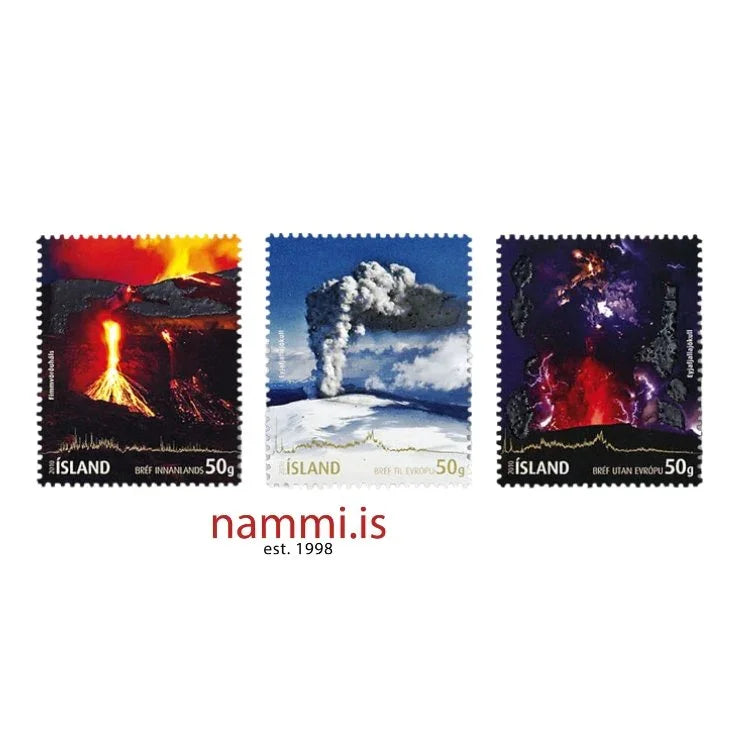
Eyjafjallajökull 3 Stamps - Special Issue
Volcanic Eruption in Eyjafjallajökull - Set of stamps one of each
All the stamps are silkscreen printed with very fine-grained trachyandesite ash (3 microns (μm) or less) which fell at Eyjafjallajökull April 17th 2010. The trachyandesite magma has ca. 60% silica content and comes from a depth of 7 km with a temperature of more than 1100°C when it reaches the glacial ice.
The volcanic events in Eyjafjallajökull which started in March 2010 are considered to be a single eruption divided into different phases. The first phase started on March 20 with a relatively small eruption on Fimmvörduháls. Additional localised disruptions continued for a few weeks. Beginning on April 14th the eruption entered a second phase, creating an enormous ash cloud that led to the closure of most of Europe's IFR airspace for a few days - the highest level of air travel disruption since the Second World War. This phase resulted in an estimated 250 million cubic metres of ejected tephra with the ash plume rising to a height of approx. 9 kilometres. Thick layer of ash fell on some Icelandic farms and pastures, making it very difficult to continue farming, harvesting or grazing livestock. Hundreds of farmers and their families in the worst affected areas had to be evacuated. By 21 May 2010, the second eruption phase had died down, indicating that the volcano had become dormant
again.










